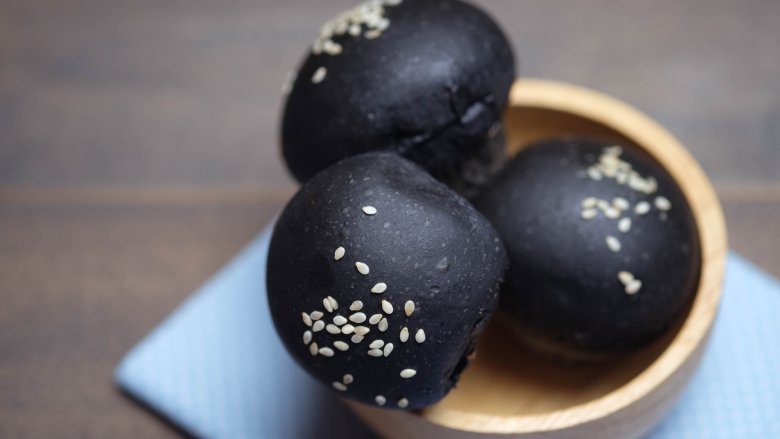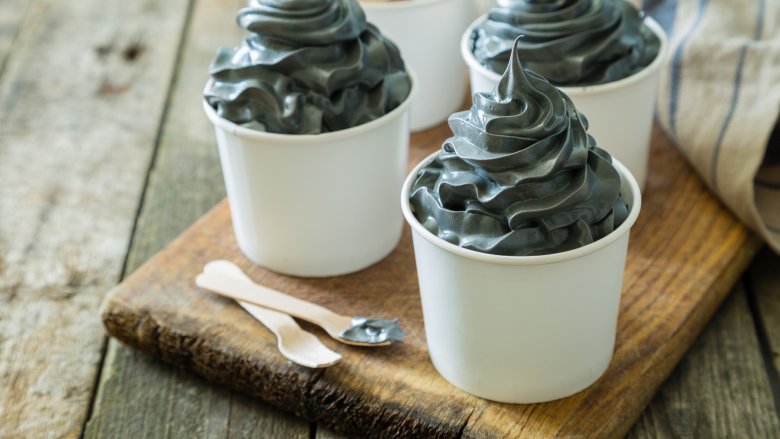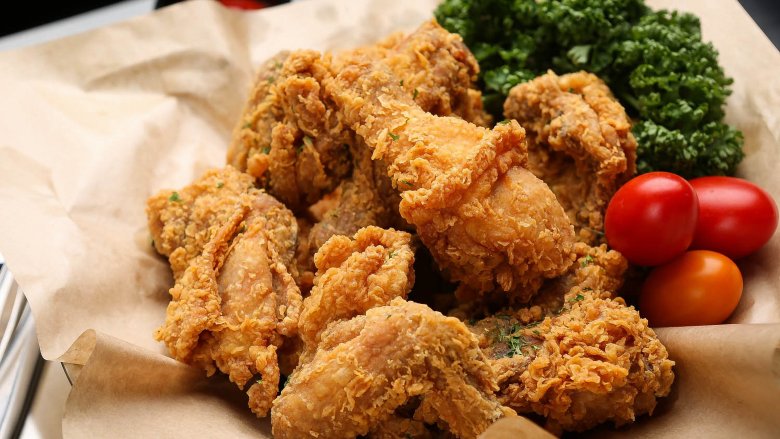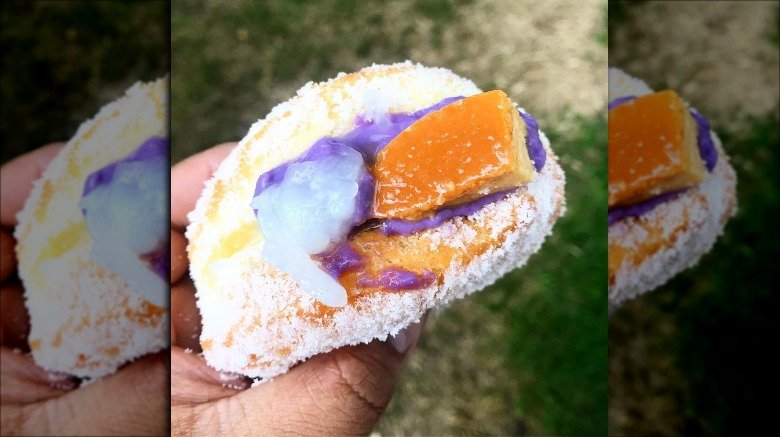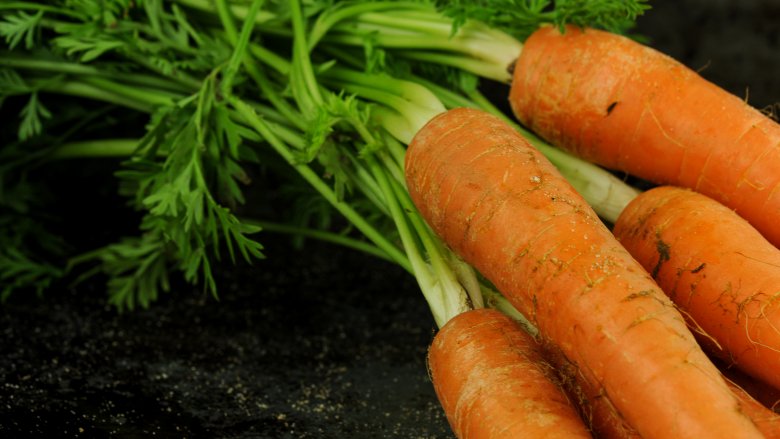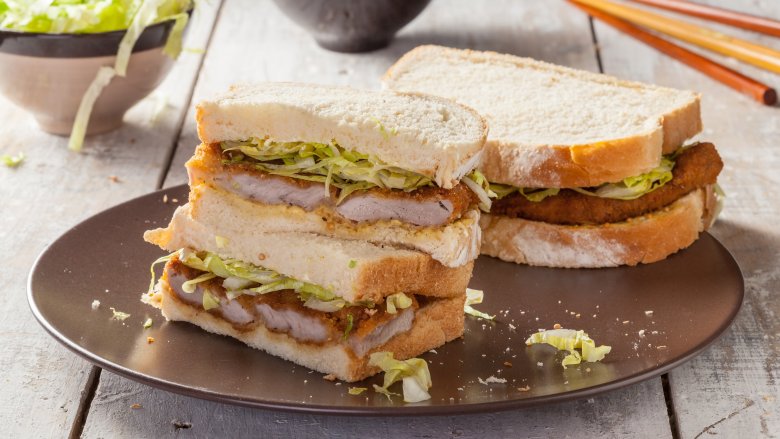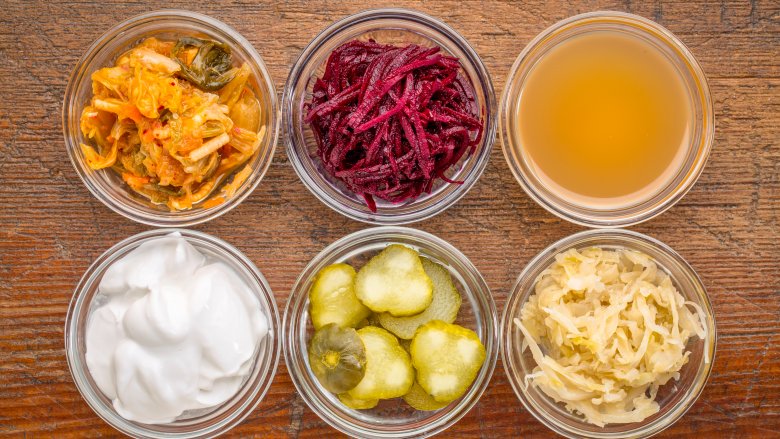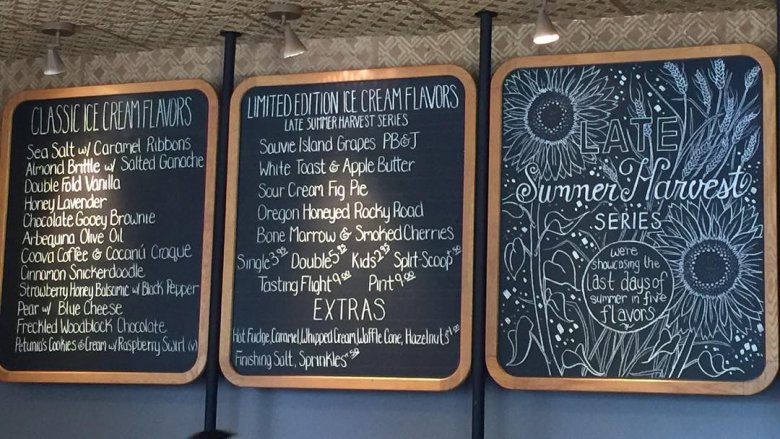The Weirdest Food Trends From 2018
2018 has been a hell of a year. Not just for world news, politics, film, television, culture, and mankind in general, but also for food. It seems like every year the trends associated with eating and drinking get just a little bit more bizarre, and this year has been no different — thanks mostly to the steady march of the health, vegan, and sustainable food crazes.
Since the turn of the new year, we've seen all sorts of crazy new food trends and food fashions hit our plates. Some of them, such as the veganization of classic comfort foods and the boom in root-to-stem cooking, are to be commended. Good job, everyone. Others, however, such as the surging popularity of raw water and this strange new obsession people seem to have with unconventional ice-cream flavors, are a little more questionable. What they all have in common is this: they're all pretty damn weird.
Activated charcoal
The notion of detoxification has been an incredibly popular one in the last few years. And why wouldn't it? The idea that you can simply abstain from certain foods and drinks, while loading yourself with special (yet still delicious) superfoods and suddenly become healthy and happy again, no matter how many daiquiris you crushed at the last office party — what's not to love?
Activated charcoal is the latest development in this trend. It's the reason you've probably seen so many black versions of food on social media recently, and has its roots in medicine, where charcoal is used to prevent certain poisons from being absorbed by the body. The concept of the modern trend seems simple enough: if charcoal can cure poison, why not infuse it into your food so as to cleanse your body in other ways?
Well, because it's completely pointless to do so unless you're actually sick, and even then you'd need to apply a hefty dose of it to have any real medicinal effects. Oh, and when activated charcoal is used to allay the effects of an overdose or to aid with a detox, it's usually taken on an empty stomach. Not to mention the fact that it can actually interfere with other medications — including the contraceptive pill. Or that the charcoal will absorb as many beneficial nutrients from your body as it will toxins. So, yeah — maybe resist the temptation to blacken up your halloumi burger next time.
Vegan fried chicken
Anybody who's recently gone vegan might find themselves struggling to adapt to a life without some of their favorite vegan-unfriendly foods — and chief among these, for some, will be fried chicken. Sadly, as delicious as it is, fried chicken joints often acquire their meat from incredibly unethical sources, and in the past, the major chains have been no exception. Even if you're not vegan, you should probably think twice about eating most fried chicken.
Enter the vegan alternative. It exploded onto the culinary scene in London this year when the Temple of Seitan, one of the city's many take-out restaurants, began selling vegan fried chicken. They do this by rinsing the starch out of flour, leaving only only gluten proteins which can then be fried or baked. This is called seitan.
Unconventional donuts
Everyone loves a good donut. This year, however, it seems everyone has also gotten bored with the more traditional donut fillings — you know, jam, cream, nothing, that kind of thing — and have attempted to spruce things up by collectively losing their entire damn minds. In Los Angeles, one cafe has begun selling donuts filled with Snickers. In New York, another fills theirs with espresso cardamom, pear cloves and banana malts. A donut place in Sydney, Australia sells donuts containing things as wide-ranging as yams, cherry blossom and milk tea.
Elsewhere, you'll find donuts stuffed full of eggnog cream, yuzu curd, liqueur, Early Grey tea, chili, cheesecake, coffee, fried noodles, ganache, and more, popping up all over the globe. And although most of these seem like the kind of treats even the Mad Hatter would hesitate to serve at a tea party, it's difficult to be cynical when people are being this creative with their desserts. Live and let live, we say.
Cannabis cuisine
Considering that cannabis legalization is becoming a reality for more and more Americans with each passing year, it probably doesn't come as much of a surprise to find that cooking with weed is now en vogue. Infusing food with THC isn't exactly new concept, but it's been taken to new heights in 2018. No longer is "cannabis cuisine" merely a vaguely ironic term used to describe the brownies and other edibles baked up by college students — now, it can refer to the recipes and dishes offered by a number of professional chefs around the world.
Confectionary is still the most popular form of THC-infused food sold today, but you'll also find cannabis cropping up in everything from sushi, to cocktails, to burgers. The idea is that you can sit down and eat a good meal that simply gets better as it goes on. As more states and countries push for decriminalization and legalization of cannabis, you can expect to see this trend become even more popular than it has this year.
Raw water
Raw water is exactly what it sounds like. Rather than your run-of-the-mill tap water, which contains detoxicants, chemicals, and other additives implemented at water treatment plants, raw water is taken from the source and sold as it is — usually at a massively inflated price. The case for raw water, made so eloquently by the people who sell it, posits that tap water is filled with trace amounts of medications, antibiotics, sex hormones, drugs and other additives. Because raw water is taken from a covered spring, however, its purveyors insist that it's free of man-made and natural contaminants.
The EPA would disagree with this argument, however. According to them, any water taken from the source is at risk of contamination from animal waste, pollution, chemicals and microbials, and requires treatment. Even water which appears clean can infect you with all manner of diseases and parasites. And while this year has seen raw water flying off the shelves (despite the high price tag) you might be better off just filtering your tap water. Easier, no?
Algae
Yeah, okay, spare us your retching. Eating algae might not immediately seem like the tastiest — or even most sensible — thing in the world, but 2018 has in fact seen those little green organisms hit menus across the world. Nowadays, you can get hold of everything from algae smoothies, to algae protein bars, and even algae chips. The big idea is that the food consumption exerted by humanity is completely unsustainable, and algae offers the opportunity to feed a busy planet. Algae doesn't require fresh water to grow, is packed with nutrition (especially protein), and can be produced quicker than normal crops.
What's even better is that the experts and companies who are trying to etch out a foothold in the algae food industry are utilizing forms of algae which (to put it simply) don't actually taste like pond goop. And as the world begins to run out of arable land and fresh water, this type of food might become more and more of a staple in your everyday diet. So get used to green smoothies.
Root-to-stem cooking
Last time you chopped up a carrot, how much of it did you actually use? Maybe 60 or 70 percent of it? Maybe even less if you were liberal with your top-and-tailing. Well, the root-to-stem movement means to put an end to all that. Root-to-stem cooking, which exploded within the eco-friendly cooking scene in 2018, is driven by the idea that you use every last piece of each ingredient when cooking, including those that would ordinarily be wasted or composted.
This could mean using broccoli stalks and mushroom stems in stocks and salads, cooking onions and garlic in their skins, and making chimichurri out of carrot-tops. Although root-to-stem cooking hasn't quite become the norm in restaurant culture, it's growing ever more popular for at-home cooks — especially those who consider themselves environmentally conscious. Think about saving that veggie waste next time you're in the kitchen, then. You might not regret it.
The katsu sando
It might take you a second or two, but you can more than likely guess what a katsu sando is. It allegedly has its origins as far back as 1899, when a restaurant in Tokyo began serving them as an homage to western schnitzels. In 2018, however, it became something of a trendy menu item at restaurants and cafes all around America. They're made simply enough: a thick cutlet of pork or wagyu is covered in tonkatsu sauce and sandwiched between two slices of shokupan, a type of Japanese milk bread.
They're intensely flavored, crunchy, moist and incredibly rich. And now they've begun to appear in New York, Atlanta, Austin, Cambridge, Seattle and far beyond. Considering the katsu sando was originally created as a Japanese attempt to replicate western cuisine, it seems apt that the west has finally begun to replicate it in turn. If you can find one, try one. They're really pretty good.
Gut-friendly foods
It seems like every year, several new health-conscious trends begin to make headlines — and perhaps most ubiquitous of all in 2018 is the coming of the gut-friendly food craze. Gut health exists on the principal that microbes contained within your digestive system affect the way you balance your glucose levels, store fat and respond to hormones released inside your body. Mess up your gut and you could be facing a litany of health problems later in life, both physical and mental.
The best foods for gut health (that is, those which digest nutrients, synthesize vitamins and fight toxins) tend to be high in fiber and nutrients, and are often fermented. This means that, in this sense, vegetables, grains, and beans are your friends. Whereas meat, junk food, dairy, and eggs contribute in a net negative way to your gut. Specifically, think about introducing things like sauerkraut, kimchi, tempeh, miso, kefir or pickles into your diet (in moderate amounts, of course). Your gut will thank you for it.
Ice-cream madness
Making ice-cream with unusual flavors isn't a trend which is exclusive to 2018 — people have been doing it for years. This year, however, it feels like ice-cream vendors and parlors have been outdoing themselves like never before, with some of the downright weirdest flavors ever known to mankind.
These days, you can get ice-cream flavored with brie, fermented soybeans, chili, Swiss cheese, squid ink, Cheetos, broccoli, cucumber dill, pickle juice, ham, pizza crust, black olives, lobster, fried chicken, olive oil and beer. This list is by no means exhaustive, either; it seems like the ingenuity/creativity/lunacy of ice-cream creators around the world has no end. Whether this is a good thing or a bad thing we'll leave up to you — and only lament that these people were so preoccupied with whether or not they could, that they didn't stop to think if they should. Pickle juice ice-cream. God help us all.
